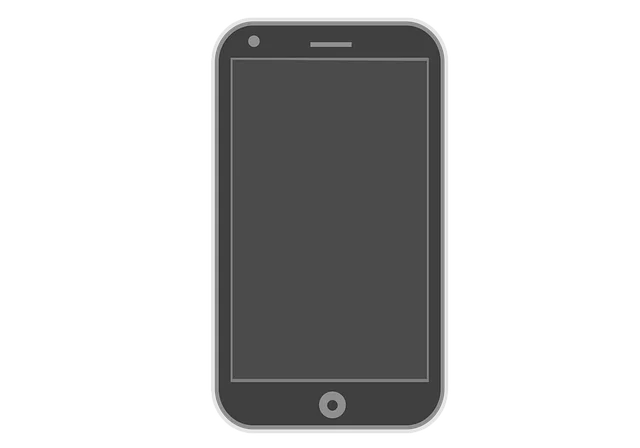Adopting a Mobile-Friendly Design strategy is essential in today's digital world, where mobile devices dominate internet usage. It optimizes websites for speed, navigation, and responsiveness across various screen sizes, enhancing user experience and boosting online visibility. This approach drives engagement, increases conversions, and contributes to the success of digital marketing efforts. By creating responsive layouts, leveraging tools like Bootstrap and JavaScript libraries, and evaluating key metrics, businesses can ensure their custom mobile websites captivate users and outperform competitors.
In today’s mobile-first world, a custom mobile website design is no longer an option—it’s a necessity. Understanding and implementing mobile-friendly design principles are crucial for engaging users and enhancing business growth. This article explores the significance of mobile-friendly design in 2023, delving into key elements, best practices, user experience optimization, and essential tools. We’ll also discuss how to measure success, ensuring your website excels in a competitive digital landscape.
Understanding Mobile-Friendly Design: Why It Matters Today

In today’s digital era, with the majority of internet users accessing websites through their smartphones and tablets, understanding mobile-friendly design has become paramount for businesses and content creators alike. Mobile-friendly design isn’t just about making your site accessible; it’s about ensuring a seamless user experience across all devices. A mobile-friendly website loads quickly, is easy to navigate, and adapts beautifully to different screen sizes, allowing users to access information and engage with your brand effortlessly.
This shift towards mobile dominance has led to search engines like Google prioritizing mobile-friendly sites in their rankings. In other words, investing in mobile design isn’t just good for user satisfaction; it’s also a strategic move to enhance online visibility and attract more visitors. A well-designed mobile site can drive engagement, increase conversions, and ultimately contribute to the success of any digital marketing efforts.
Key Elements of Effective Custom Mobile Website Design

In the realm of digital presence, a custom mobile website design stands as a pivotal strategy to captivate and engage users on their handheld devices. The essence lies in creating an experience that is not just responsive but also uniquely tailored to the mobile platform. A successful design must prioritize simplicity, ensuring easy navigation and fast loading times, catering to the impatient nature of mobile users. Incorporating a clean layout, optimized for smaller screens, allows for seamless scrolling and efficient interaction.
Central to effective custom mobile website design is the integration of a mobile-friendly interface. This involves streamlining content, utilizing touch-optimised elements, and ensuring accessibility across various devices. Visual appeal is enhanced through responsive imagery and minimalistic yet captivating design aesthetics, fostering user engagement. Moreover, leveraging interactive features like swipe gestures and touch-based interactions can significantly improve the overall usability, making your website stand out in the digital landscape’s hustle and bustle.
Best Practices for Creating Responsive Layouts

Creating responsive layouts is paramount in modern web design, especially for mobile-friendly design. The key is to ensure your website adapts seamlessly to various screen sizes and resolutions, providing an optimal user experience regardless of device. Start by employing a flexible grid system that adjusts fluidly, allowing content to reconfigure itself based on available space. Utilize relative units like percentages instead of fixed units like pixels for dimensions; this enables layouts to scale up or down according to the screen’s aspect ratio.
Implementing media queries is another best practice for achieving responsiveness. These CSS rules allow you to apply specific styles based on device characteristics, such as screen width or orientation. By conditioning your design to respond to these changes, you can serve the right content and layout for each unique viewing context. Remember to test extensively across different devices and browsers to ensure consistency and maximize accessibility for all users.
User Experience: Optimizing for Small Screens

In the realm of custom mobile website design, user experience (UX) optimization for small screens is paramount. With a majority of internet users accessing sites via smartphones and tablets, creating a seamless and intuitive experience on these devices is no longer an option but a necessity. A mobile-friendly design ensures that a website’s content, navigation, and overall layout adapt gracefully to various screen sizes, making it easy for users to interact with the site without frustration or inconvenience.
This involves careful consideration of elements like typography, image sizing, and responsive layouts. Optimizing these aspects allows for clear readability, efficient data consumption, and smooth navigation, even on the smallest screens. A well-designed mobile website enhances user engagement by providing a familiar, comfortable experience that rivals that of desktop versions—a crucial factor in retaining visitors and encouraging conversions.
Tools and Technologies for Building Custom Mobile Websites

In the realm of custom mobile website design, developers have a plethora of tools and technologies at their disposal to create stunning, user-friendly interfaces. One of the key considerations is adopting a Mobile-Friendly Design approach, ensuring that websites are optimized for various screen sizes and resolutions. Responsive web design frameworks like Bootstrap and Foundation offer a solid foundation by providing pre-built styles and layouts that adapt seamlessly across devices.
These platforms utilize CSS media queries to adjust content placement, font sizes, and image dimensions, delivering an intuitive experience on smartphones and tablets. Additionally, JavaScript libraries such as React, Angular, or Vue.js enable dynamic content rendering and interactive elements, elevating the overall user engagement. With these technologies, developers can build custom mobile websites that not only look exquisite but also function flawlessly across diverse platforms.
Measuring Success: Evaluating the Impact of Your Design

Evaluating the success of your custom mobile website design is crucial. It’s not just about aesthetic appeal; it’s about how well your site functions and engages users on smaller screens. Key metrics like user retention, bounce rates, and time spent on-site offer insights into user satisfaction. A successful mobile-friendly design enhances usability, ensuring quick loading times, easy navigation, and responsive elements that adapt to various device sizes.
This impact can be further gauged by user feedback and analytics tracking. Positive reviews, lower bounce rates, and increased conversion rates indicate a design that resonates with your audience. By regularly monitoring these factors, you can identify areas for improvement and make data-driven adjustments to keep your mobile website at the top of its game in today’s competitive digital landscape.
